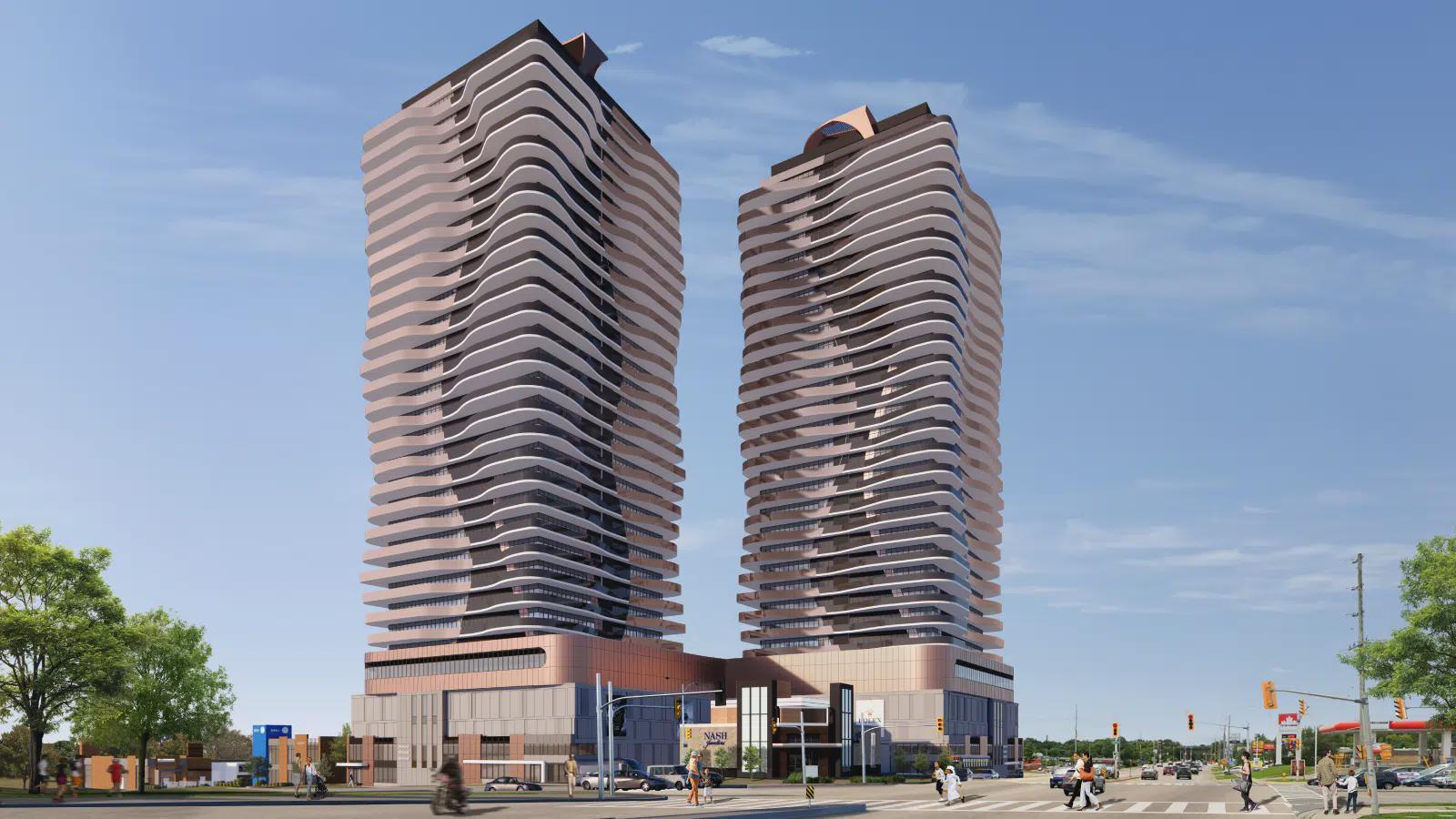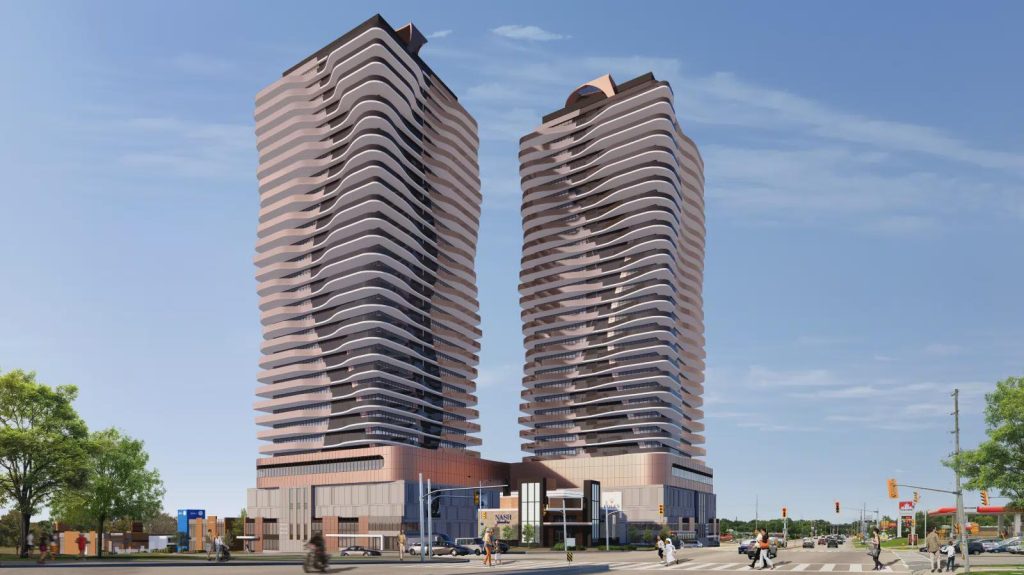Two massive 33-storey residential towers are being proposed for the Oxford Street West shopping mall area, specifically on the site behind Nash Jewellers. The ambitious development would dramatically transform one of London’s busiest intersections, adding significant high-density housing to an area already experiencing rapid growth.

The proposed twin towers feature a distinctive wavy facade design that’s caught the attention of local residents online. The architectural style represents a departure from traditional rectangular tower designs, with curved elements that create visual interest along the Oxford corridor.
The development site sits at what many consider one of London’s most strategic locations for high-density housing. The area provides immediate access to multiple grocery stores within walking distance, including the busy Costco location that already draws significant traffic to the intersection. Residents would also have easy access to various restaurants, gyms, and services in the immediate vicinity.
Local discussions about the project have highlighted both excitement and concerns about the development. Many residents appreciate the focus on building up rather than contributing to urban sprawl, viewing the location as ideal for dense housing given its proximity to amenities and major roadways.
However, traffic concerns dominate much of the conversation around the proposal. The Oxford and Wonderland intersection already experiences significant congestion, particularly during peak hours. The area has seen multiple large developments in recent years, including projects along Beaverbrook and other nearby sites, adding thousands of new residential units to what’s becoming one of the city’s densest neighbourhoods.
The timing of this development proposal comes as the city grapples with infrastructure planning for the rapidly growing area. Several years ago, London city council voted down the west leg of the proposed Bus Rapid Transit (BRT) system that would have serviced this exact location. The decision has drawn criticism as development continues to intensify without corresponding transit infrastructure improvements.
The intersection’s transformation reflects broader changes in London’s development patterns. What was once considered a suburban shopping area is evolving into a secondary city centre, with high-rise residential buildings becoming the norm rather than the exception.
The proposal includes commercial space on the ground floors of both towers, which would add retail and service options to complement the residential component. The specific mix of unit sizes and pricing details haven’t been publicly released, though similar recent developments in London have typically focused on smaller units targeting younger professionals and students.
Parking considerations represent another significant aspect of the development. The existing mall parking lot already experiences heavy usage, particularly with the Costco location and other popular retailers. The developers will need to address how hundreds of additional residents will impact parking availability and traffic flow in the immediate area.
The architectural design has generated mixed reactions from local residents. Some describe the wavy facade as resembling melting buildings or motorcycle engine cylinders, while others appreciate the modern aesthetic as an improvement over more traditional rectangular tower designs.
The development represents part of a broader trend seeing major residential projects concentrated around the Oxford and Wonderland area. With multiple large-scale developments either completed or proposed for the vicinity, the intersection is rapidly becoming London’s unofficial second downtown core.
The proposal joins several other significant developments transforming the Oxford corridor, including projects near the former Swiss Chalet location and additional developments along Beaverbrook. Combined, these projects are adding thousands of new residential units to a relatively small geographic area, fundamentally changing the character and density of what was traditionally a suburban commercial district.
Local residents have noted on Reddit that the concentration of development in this area seems to be happening without corresponding infrastructure improvements to handle the increased population and traffic load

